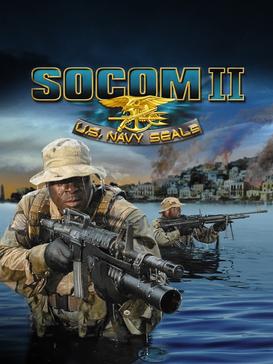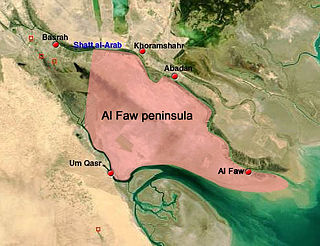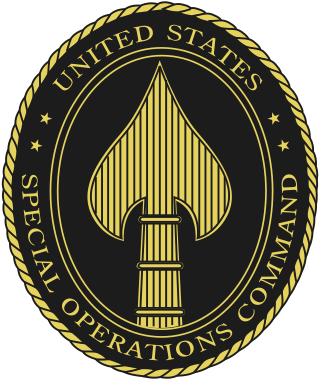
The United States Navy Sea, Air, and Land (SEAL) Teams, commonly known as Navy SEALs, are the U.S. Navy's primary special operations force and a component of the Naval Special Warfare Command. Among the SEALs' main functions are conducting small-unit special operation missions in maritime, jungle, urban, arctic, mountainous, and desert environments. SEALs are typically ordered to capture or kill high level targets, or to gather intelligence behind enemy lines. SEAL team personnel are hand selected, highly trained, and possess a high degree of proficiency in direct action (DA), and special reconnaissance (SR), among other tasks like sabotage, demolition, intelligence gathering, and hydro-graphic reconnaissance, training, and advising friendly militaries or other forces.

Operation Anaconda or the Battle of Shah-i-Kot was a military operation that took place in early March 2002 as part of the War in Afghanistan. CIA paramilitary officers, working with their allies, attempted to destroy al-Qaeda and Taliban forces. The operation took place in the Shah-i-Kot Valley and Arma Mountains southeast of Zormat. This operation was the first large-scale battle in the post-2001 War in Afghanistan since the Battle of Tora Bora in December 2001. This was the first operation in the Afghanistan theater to involve a large number of U.S. forces participating in direct combat activities.

The Special Boat Service (SBS) is the special forces unit of the United Kingdom's Royal Navy. The SBS can trace its origins back to the Second World War when the Army Special Boat Section was formed in 1940. After the Second World War, the Royal Navy formed special forces with several name changes—Special Boat Company was adopted in 1951 and re-designated as the Special Boat Squadron in 1974—until on 28 July 1987 when the unit was renamed as the Special Boat Service after assuming responsibility for maritime counter-terrorism. Most of the operations conducted by the SBS are highly classified, and are rarely commented on by the British government or the Ministry of Defence, owing to their sensitive nature.
Bravo Two Zero was the call sign of an eight-man British Army Special Air Service (SAS) patrol, deployed into Iraq during the First Gulf War in January 1991. According to Chris Ryan's account, the patrol was given the task of gathering intelligence, finding a good lying-up position (LUP), setting up an observation post (OP), and monitoring enemy movements, especially Scud missile launchers on the Iraqi Main Supply Route (MSR) between Baghdad and northwestern Iraq; however, according to Andy McNab's account, the task was to find and destroy Iraqi Scud missile launchers along a 250 km (160 mi) stretch of the MSR.

SOCOM II U.S. Navy SEALs is a tactical shooter video game developed by Zipper Interactive and published by Sony Computer Entertainment for PlayStation 2. It is the sequel to SOCOM U.S. Navy SEALs.

Colin Armstrong,, usually known by the pen-name Chris Ryan, is a British author, television presenter, security consultant and former Special Air Service sergeant.
Operation Dingo, or the Chimoio Massacre, was an attack by the Rhodesian Security Forces against the Zimbabwe African National Liberation Army (ZANLA) run camps at Chimoio and Tembue in Mozambique from 23 to 25 November 1977.

Navy SEALs is a 1990 American military action film, directed by Lewis Teague, written by Chuck Pfarrer and Gary Goldman, and produced by Brenda Feigen and Bernard Williams with consultant William Bradley. The film stars Charlie Sheen, Michael Biehn, Joanne Whalley-Kilmer, Rick Rossovich, Cyril O'Reilly, Bill Paxton, and Dennis Haysbert.

Operation Paraquet was the code name for the British military operation to recapture the island of South Georgia from Argentine military control in April 1982 at the start of the Falklands War.

The Raid on Pebble Island was a raid by British Special Forces on Pebble Island's airfield during the Falklands War, and took place on the night of 14–15 May 1982. Pebble Island is one of the smaller Falkland Islands, lying north of West Falkland. The site was being used as a forward operating base for T-34 Mentor and Pucara aircraft by the Argentine Air Force; British Special Air Service (SAS) operatives were tasked with destroying the aircraft on the ground, in an operation that echoed back to some of the unit's first missions during the North African Campaign of World War II. SAS elements, then embarked on HMS Hermes, were tasked with eliminating the airfield, with naval support from the Type 22 frigate HMS Broadsword as Hermes defensive escort and the County-class destroyer HMS Glamorgan to provide naval gunfire support with its Mark 6 4.5 inch guns.
The history of the British Army's Special Air Service (SAS) regiment of the British Army begins with its formation during the Western Desert Campaign of the Second World War, and continues to the present day. It includes its early operations in North Africa, the Greek Islands, and the Invasion of Italy. The Special Air Service then returned to the United Kingdom and was formed into a brigade with two British, two French and one Belgian regiment, and went on to conduct operations in France, Italy again, the Low Countries and finally into Germany.
Operation Thunderhead was a highly classified combat mission conducted by U.S. Navy SEAL Team One and Underwater Demolition Team 11 (UDT-11) in 1972. The mission was conducted off the coast of North Vietnam during the Vietnam War to rescue two U.S. airmen said to be escaping from a prisoner of war prison in Hanoi. The prisoners, including Air Force Colonel John A. Dramesi were planning to steal a boat and travel down the Red River to the Gulf of Tonkin.

The Battle of Al Faw was one of the first battles of the Iraq War; it took place March 20-24, 2003.

Operation Mikado was the code name of a military plan by the United Kingdom to use Special Air Service troops to attack the home base of Argentina's five Super Etendard strike fighters at Río Grande, Tierra del Fuego, during the 1982 Falklands War. Brigadier Peter de la Billière was in charge of planning the operation.

Operation Anglo was a British Commando raid on the island of Rhodes during the Second World War. The raid was carried out by eight men of the Special Boat Section (SBS) assisted by four Greeks.
Operation Kerslig was a South African Defence Force special forces raid on an oil refinery outside Luanda, Angola. The raid took place on 30 November 1981 by members of the 1 and 4 Reconnaissance Regiments.

The United States Special Operations Command is the unified combatant command charged with overseeing the various special operations component commands of the Army, Marine Corps, Navy, and Air Force of the United States Armed Forces. The command is part of the Department of Defense and is the only unified combatant command created by an Act of Congress. USSOCOM is headquartered at MacDill Air Force Base in Tampa, Florida.
Operation Lark was two special forces naval operations in 1978 conducted by members of the South African Navy (SADF), 4 Reconnaissance Regiment and Rhodesian SAS during the South African Border War. Its objective was the assassination of Robert Mugabe at his residence in Maputo, Mozambique.











